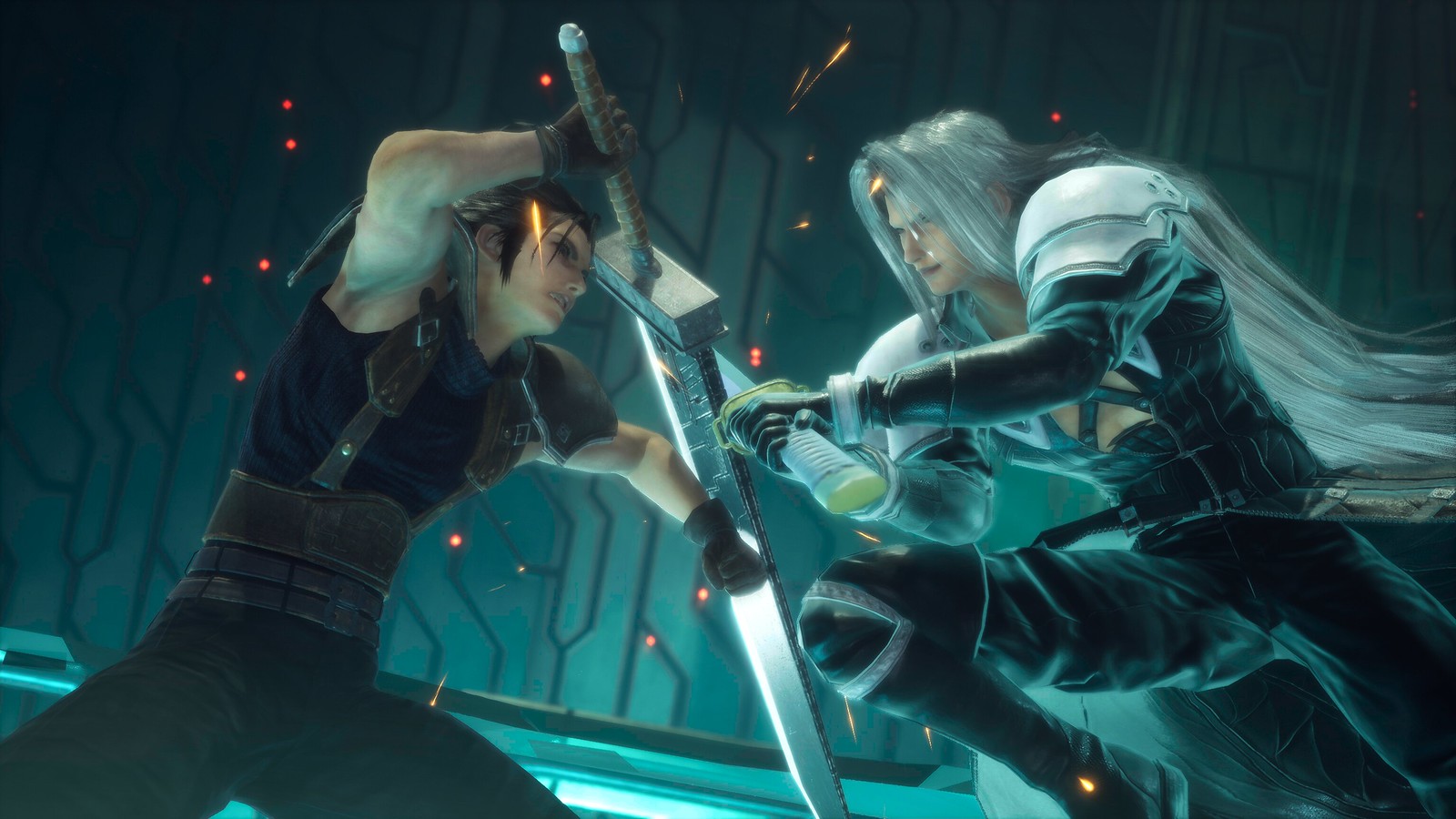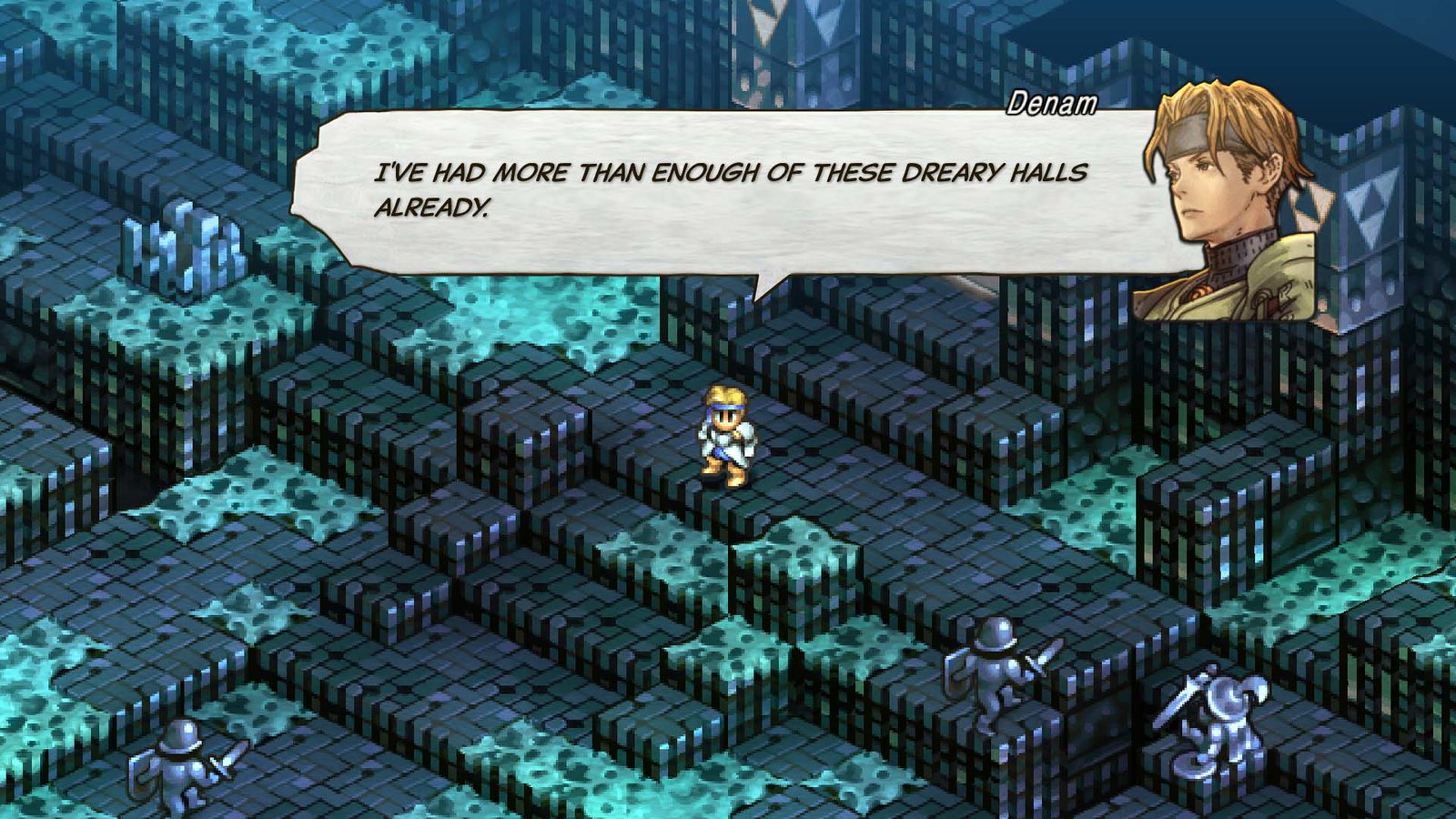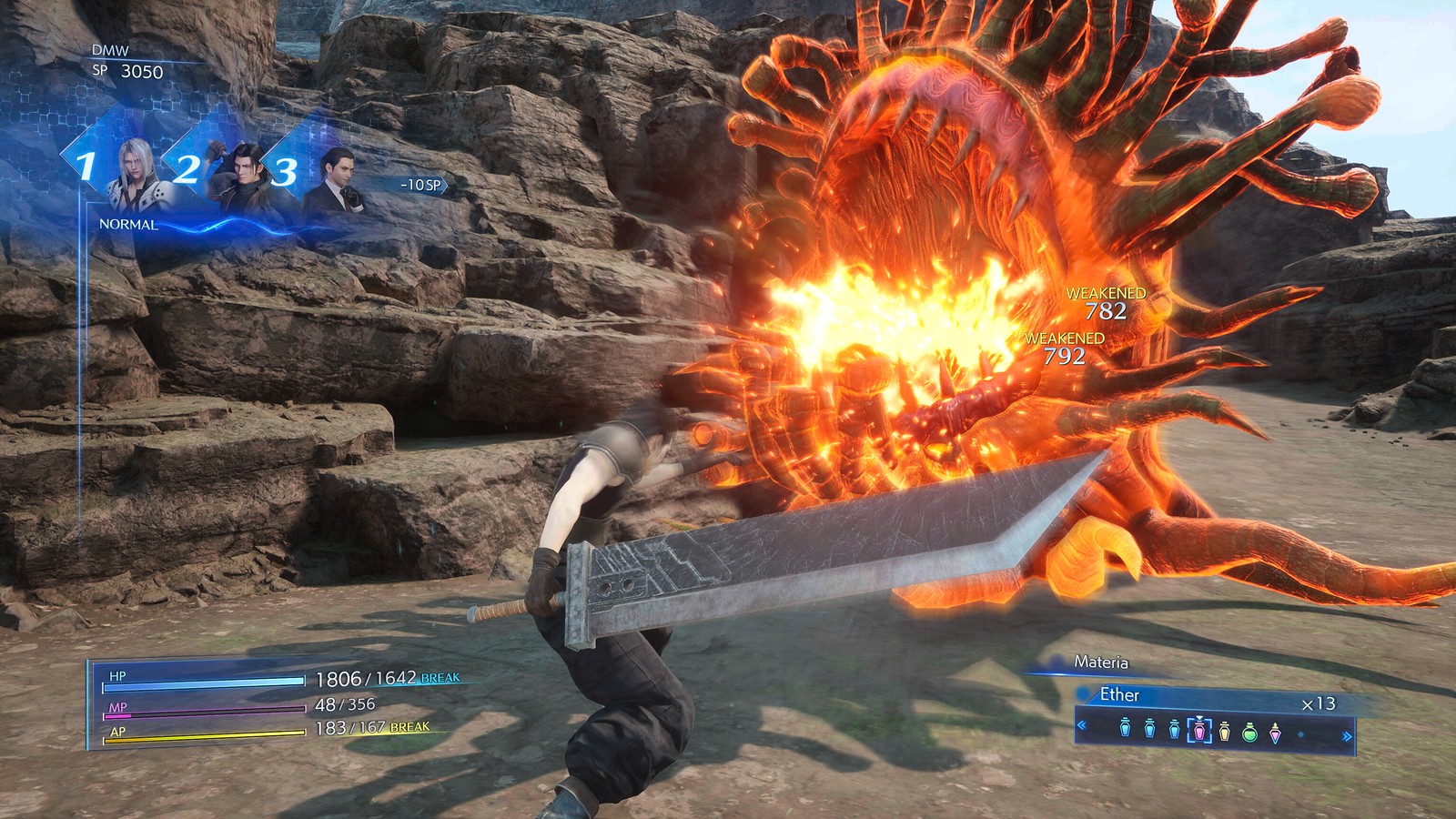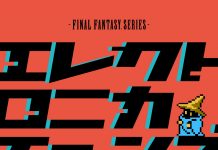Two of the biggest games of the PlayStation Portable era are back and doing their job.
Crisis Core Final Fantasy VII Reunion and Tactics Ogre: Reborn isn't just an allegory; These are all-new experiences, improvements, additional features, and more.
For example, Crisis Core - a prequel to the original Final Fantasy VII - has had a complete visual overhaul and a major redesign of its combat system to make it faster, smoother, and more fun.
Tactics Ogre: Reborn completes Tactics Ogre: sticking with updated graphics and sounds, as well as improved combat and customization systems that make gameplay easier and more strategic. There is also completely new content. Already considered one of the jewels of the tactical RPG genre, it just got even brighter!
How about porting exclusive games directly to modern platforms? With both games releasing in 2022, we rounded up the developers to find out!
This discussion includes:
Yoshinori Kitas (Producer, Crisis Core Final Fantasy VII Reunion)
Mariko Sato (Producer, Crisis Core Final Fantasy VII Reunion)
Hiroaki Kato (Producer, Tactics Ogre: Reborn)
Takashi Katano (Director, Tactics Ogre: Reborn)
Naoyuki Takahashi (Lead Game Designer, Tactics Ogre Reborn)

Crisis Core Final Fantasy VII and Tactics Ogre: Let's Cling Together are two of the most popular games released for PSP. There are high hopes for her return, especially in a new and improved form, but why is she doing it now?
Hiroaki Kato (Producer, Tactics Ogre: Reborn): Personally, I've always had a strong desire to one day participate in the development of Tactics Ogre again; PSP version.
The turning point for me was the development of Final Fantasy XII The Zodiac Age, which I was responsible for. After improving original game elements such as graphics and sound, adding new audio recordings, and improving battle design and gameplay, I thought, "Maybe I can use this knowledge to create a new tactical ogre!"
Then I decided to develop it.
Yoshinori Kitase (Producer, Crisis Core Final Fantasy VII Reunion): When the game's original hardware is no longer in production, it can be difficult to play. The core of the crisis is an example.
Of course, it will be possible to use cloud technology to play the game with its original characteristics, but the fact is that after the Final Fantasy VII edition, fans have high hopes for the graphics.
So I think it's definitely worth revamping the game for current-gen platforms to meet those expectations.

Of course, it's also a reunion with many of you who worked on those original games. You probably have fond memories of that time...
Yoshinori Kitas (Producer, Crisis Core Final Fantasy VII Reunion): I was the CEO of the first Crisis Core...but we didn't have enough game designers back then, so I joined the creative teams as well. for the development part. Time!
I was responsible for several parts of the original Final Fantasy VII, such as designing the levels in Shinra's mansion and organizing the confrontation between Cloud and Sephiroth in the Nibelheim reactor. There was a lot of nostalgia ( laughs )!
Takashi Katano (Director of Tactics Ogre: Reborn): I was the Technical Director of Tactics Ogre: Let's Stick Together, so I'm more thinking about the technical aspects. The most memorable moments for me were creating the prototypes of the Tarot Chariot and the World Tarot.
These features were the most technically challenging as they allowed you to rewind the battles and progress in the game itself. I remember how new it was to be able to do this!
Kato: For this PSP version, we recorded and performed three songs with live orchestras: the opening ballad, the movie intro, and the movie opening song. I remember listening to the three song statements handed to us as I was overwhelmed by the power of a live orchestral performance.
Tactics Ogre: Reborn features a live orchestral performance throughout the game, so I hope people feel the same way I did years ago.
Mariko Sato (Producer, Crisis Core Final Fantasy VII Reunion): I didn't work on the original Crisis Core, but I definitely played it when it came out!
At the time, I vaguely remembered Zack as a character who appeared briefly in Final Fantasy VII, but was very surprised by the emotional response to his story.
Naoyuki Takahashi (Lead Game Designer, Tactics Ogre Reborn): I played Tactics Ogre: Let Us Cling Together on PSP and found the game very interesting, especially the huge amount of story and combat options.
I remember being surprised and excited because even after the game ended I was still able to play with the endgame unit formation and content.

These two conversions add many improvements and new features. How did you decide what to add to the game?
TAKAHASHI: First, all members of the Tactics Ogre: Reborn development team played the original game together and made a list of good points and things that could be improved. Based on this list we had discussions and decided what to add to this new version.
Kato: Yes, I played the PSP version again, including all the expansions, so I played with that game most of the time ( laughs ).
Luckily, one of the great things about this game is that you can play it over and over again without getting bored. That, plus a list of things to check and new things to pick up, means that playing Trials has always been a new and fun experience.
Takahashi : The list of changes and new features has evolved over the course of development, and when we found new items to add, we've included them as well.
Katano: There are also a few things that we've already settled on based on player feedback on the PSP version, including applying higher tiers to units instead of classes and fixing the AI.
Of course, not everything went as planned and some things found their way into the development process, such as a significant change in the sound effects, achieved through the efforts of our audio department in the second half of the project. .
Sato: Regarding Crisis Core, we discussed with creator Nomura Tetsuya what direction we would like to take in the updated version. The development studio (Tose) also made suggestions for improvement and based on that we decided what to do.
What was the biggest challenge adding these new features?
Sato: There were many problems, but one of the biggest was setting up the visual effects. At first we considered moving the graphics as is, but when we brought the original to the big screen we had many concerns.
In the end we decided that we wanted to create a feel similar to the visuals of Final Fantasy VII REMAKE. However, when we changed the 3D models, some things didn't work properly, so we spent many days tweaking and tweaking.
Kitase: The PSP used the same graphics technology as the PS2 generation, so there is a difference of three generations! Crisis Core -Final Fantasy VII- Reunion has achieved graphics quality similar to Final Fantasy VII REMAKE, which looks like a new, more modern and exciting game.
Sato: We also felt that the original Crisis Core combat system was difficult to play at times, especially compared to recent action-based fighting games.
We've reviewed all of the areas that players initially found difficulty playing the game and implemented a few ideas to improve them. It also took a long time to make the game more playable while maintaining what made the original game great.
After thinking about it, we made small changes to the game ( laughs ).

Tactics Ogre: The Reborn had many challenges.
Katano: Perhaps the most important thing was to develop a user interface (UI) compatible with the mouse and controller. We assumed from the beginning that mouse control would be possible and should include things like icons.
However, there was no decision to use a "ready-made" mouse without compromising the console's usability. We worked on many iterations and improvements until the end of development!
There were also technical issues due to the original release on an older platform. For example, the PSP version stored data based on a CLUT (Color Lookup Table), a complex mechanism that determines color by combining technically distinct elements.
Adhering to this system limited the ability to work at higher resolution, which meant some data had to be displayed in color. It was very difficult to recover data to meet this requirement.
Tactics Ogre and Crisis Core were originally mobile games. How does this development differ from the development of a game for consoles?
Sato: I can only speak from personal experience, but the specifications of the current platform generation have improved a lot compared to the previous generation, allowing you to display many different things not only with graphics but in many other ways.
Of course, this makes you want to push development as far as possible and add whatever comes to your mind.
Mobile platform games are convenient because people can play them anywhere, but the specs you can work with as a developer are limited. This way you draw a line at a certain stage of development and don't go in circles with the sentence "Oh, I really want to implement that, and I also want to add that...".
There's a big difference between developing a game for a console and a handheld device.
Katano: There are big differences between PS5 game development and PS5 game development compared to PSP or other mobile devices. For example, the two main differences are the screen resolution and the screen size on which the game is played.
For example, Tactics Ogre appears to be a pixelated game, so screen resolution has a big impact on it. We had to think about how to take advantage of the best qualities of pixel art while adapting to today's high-resolution screens.
We also had to be very careful when designing the user interface. If the game is designed exclusively for mobile devices, the UI should be larger since the screen size is fixed and smaller than the screen size. However, on modern platforms, images are displayed on screens of different sizes, so we had to set up many different screens when designing and revising the user interface.
There are also various technical considerations. For example, when we were working on Tactics Ogre: Let Us Cling Together for PSP, we had to put a lot of effort into improving the loading speed of the UMD. For the PS5 and PS4 versions of the game, the platforms solve this problem for us; We were grateful for that ( laughs )!

Crisis Core and Tactics are a favorite among Ghoul fans. Did it influence development?
Sato: In fact, from the very beginning of development, the project team recognized that this was a very popular game. We've seen how many fans write about Crisis Core every year on the anniversary of its release.
After that there was a bit of pressure, but the whole team is already starting to develop, so we're happy to show everyone the results now! It's really thanks to all the kind words from the fans who worked so hard on this new release!
By the way, everyone is yelling "Gongaga!" When we launched the game, after all our efforts, I was very happy ( laughs ).
Kato: With Tactics Ogre: Reborn, we wanted to make sure we were giving fans an experience that went beyond their memories. We focused on keeping the game's nostalgic feel while incorporating modern technology and production methods to create something easy to play.
TAKAHASHI: During development, we thought about what would make fans happy. For example, we organized the battles in such a way that the attractive powerful enemies in the story are powerful enemies in the gameplay.
Katano: And while this fundamental concept of creating customer satisfaction hasn't changed, we carefully reviewed each new element with original game director and writer Yasumi Matsuno to ensure the direction of our improvements aligns with the world of Tactics Ogre.

Finally, what would you say to players who have purchased Crisis Core - Final Fantasy VII - Reunion or Tactics Ogre: Reborn?
Sato: Crisis Core -Final Fantasy VII Reunion- is designed for PSP players to experience nostalgia but new and different, I recommend you to try it.
By playing this game, you can also enjoy the original Final Fantasy VII version, the Final Fantasy VII version and the upcoming Final Fantasy VII revival on a deeper level!
Kato: For those who have played Tactics Ogre before, full theater and live music can create a new impression. In addition, design improvements make it easier to play and allow you to enjoy the world created on the Valerian Islands even more intensely.
I hope that those who are playing in the world and history for the first time will share it, just like those who have played in the past. Enjoy flexible character development and tactical battles that make it fun to think through each move to figure out how to win!
Takahashi : I think Tactics Ogre: Reborn is different from the PSP version. New sounds and stories have been added to the game, so I hope you enjoy the game!
Katano: I would like to add that the PSP version was only available in Japanese in Japan and in English outside of Japan, but Tactics Ogre: Reborn supports English, French, German, Spanish, Japanese, Korean, Chinese, Traditional and Simplified Chinese. You can switch between English and Japanese. Therefore, we believe that more people can enjoy the game. I hope you get it and enjoy it!
——-
Thank you to everyone who participated who shared their thoughts and experiences in redesigning this wearable classic.
As you can see, Crisis Core - Final Fantasy VII - Reunion and Tactics Ogre: Reborn are much more than just Transformers. They're updating two great games, adding something new and exciting while preserving what made them great in the first place!
Tactics Ogre: Reborn will be released on November 11, 2022 on PS5 and PS4.

